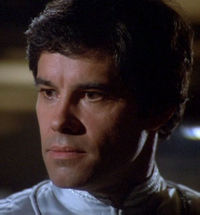Robert Ames
Robert Ames was a stage and silent screen actor who made the transition to talking motion pictures.
Early Years
Born and raised in Hartford, Ames graduated from Henry Barnard School and Hartford Public High School. He began his theatrical career at Parsons in Hartford where he sold tickets at the box office. He later joined stock companies including Hunter-Bradford Players and the Municipal Players of Northampton.
New York Stage
During his New York stage career, Ames performed in various shows such as Come Out of the Kitchen (1916) and Seed of the Brute (1926). It is said famed director/producer Cecil B. DeMille liked his acting and gave him his first chance in silent motion pictures.
Silent Films
Ames made his silent screen debut in What Women Want (1920). He later starred in films such as Nice People (1921) and Icebound (1923).
The Talkies
When sound was added to movies, he co-starred with Gloria Swanson in The Trespasser (1929), Edward G. Robinson in A Lady to Love (1930), and Mary Astor in Behind Office Doors (1931). In all, Ames was in more than 15 films.
Personal Life
Ames led a turbulent personal life that involved four marriages, four divorces, and excessive drinking. He was married to Alice Gerry, Frances Goodrich, Vivienne Segal, and Muriel Oakes.
Lawsuit
In 1927, Helene Lambert, a cabaret entertainer, sued Ames for $200,000 for breach of promise. Lambert claimed that he had promised to marry her after his divorce from his third wife was final. Instead, he eloped with New York society girl, Muriel Oakes.
Tragic Death
Ames died at the age of 42 in the Delmonico Hotel in New York City. His death was ruled as being from delirium tremens caused by alcohol withdrawal.
Fern Andra
Known as the Mary Pickford of Germany, Fern Andra was born in Watseka, Illinois.
Tightrope Walker
Andra began her entertainment career as a tightrope walker. Taught by her stepfather, aerialist Frank St. Clair, she was performing with the famous Millman Trio, a high wire and vaudeville act, by the time she was fifteen.
She headed to Europe with the Millman Trio, but eventually went out on her own as a stunt performer and actress. She received critical acclaim starring in a review in London and performed for an Austrian film company. She eventually moved to Berlin and starred in her first German silent film in 1913.
Filmmaker in Germany
When World War I broke out, Andra found herself trapped in Germany. She set up her own production company and produced more than 80 films, as well as starring in over 20 films. After the war, she remained in Germany and continued to make movies. When her career began to falter, she returned to the U.S. and worked in radio and theater. She made her last two movies in Hollywood in 1930.
Hartford Connection
In 1937, Andra came to Hartford to meet with playwright Samuel Dockrell who she eventually married in 1938. This was her fourth and final marriage as they remained married until his death in 1973. She passed away a few months later at the age of 81.
Katharine Hepburn
Katharine Hepburn was born and raised in Hartford and West Hartford. She was the daughter of Katharine Houghton, an active supporter of women's rights, and Thomas Hepburn, Connecticut’s first urologist.
The second of six children, Hepburn was bright, independent, and an excellent athlete. She became interested in theater at an early age. At age 8, she dramatized Uncle Tom's Cabin in the tiny theater her father had built for her.
In 1924, Hepburn followed in her mother’s footsteps and attended Bryn Mawr College. After graduation, she followed her dream of becoming an actress. She began her career in the theater, first in Baltimore and then New York.
Hollywood
After the theatrical success of The Warrior’s Husband (1932), RKO pictures invited her to Hollywood. Her first film A Bill of Divorcement debuted on September 30, 1932. In 1933 she won her first Academy Award for Morning Glory. That year she also starred in Little Women, which was a huge hit.
Hepburn’s reputation for haughty behavior off-screen led to criticism. Her refusal to play the “Hollywood Game” – wearing slacks, not wearing makeup, not posing for pictures, and not giving interviews – resulted in several flops. In 1938, Bringing Up Baby and Holiday, both with Cary Grant, slightly redeemed her, but not enough to keep her from being dubbed box-office poison.
The Philadelphia Story
Hepburn revived her career by going back to the theater. In 1938, she starred in The Philadelphia Story on Broadway, receiving critical acclaim. She obtained the film rights to the play with the financial assistance of Howard Hughes. She then sold the rights to MGM with the conditions that she star in the film and retain decision making power. It was a box office hit.
Hepburn & Tracy
Hepburn’s next film was Woman of the Year in 1942. Paired with Spencer Tracy, the movie sparked their life-long affair. They starred together in nine films and sustained a relationship that lasted 25 years. Their final collaboration was Guess Who’s Coming Dinner which was also Tracy’s last film.
Academy Award Winner
Hepburn’s career spanned five decades. She holds the record for most Best Actress Oscar wins with four. In addition to Morning Glory (1933), she won for Guess Who’s Coming to Dinner (1967), The Lion in Winter (1968), and On Golden Pond (1981).
Hepburn died at the age of 96 at her home in Old Saybrook, Connecticut.
Nicholas Hudson Holt
Born in Hartford, Nicholas Hudson Holt graduated from South Kent School and Middlebury College. He began divinity studies at Virginia Theological Seminary and finished at Berkeley Divinity School in New Haven.
Episcopal Minister
Ordained as an Episcopal Minister in 1959, his first assignment was as a curate at St. Andrews Church in Meriden. He later served in New York City and Kalamazoo, Michigan. In 1968 he moved to Chicago where he was the assistant at St. Edmund’s Church.
Acting Career
In 1972, he moved to Los Angeles and began acting under the name Nick Holt. He performed on stage, and had several minor television roles. He appeared in the TV movie Invasion from Inner Earth in 1974, and appeared in single episodes of Battlestar Galactica, Barney Miller, Starsky and Hutch, and The Next Step Beyond.
He died in LA on October 6, 1979 from injuries sustained in an accident.
Jay Ray (MacLeod)
Fannie K. Ray / Lillian Brice
Herbert Saunders
Louise Stubbs (Williams)
Louise Stubbs was born in Chicago where she received her early theatrical training. She earned a Bachelor of Fine Arts from Goodman Theatre before moving to New York in 1952. During her career, she appeared in over 50 plays, television shows, and commercials.
New York Theater
Stubbs was one of a group of Black actors including Ossie Davies, Ruby Dee, Harry Belafonte, and Sidney Poitier who found it increasingly possible to work in theater in the 1950s.
In the 1960s, she was part of the cast of the American production of Jean Genet’s controversial play The Blacks. This play featured a new generation of Black performers including James Earl Jones, Maya Angelou, Louis Gossett, Jr., and Cicely Tyson.
Television & Film
In 1965 and 1966, Stubbs was one of the few Black actors to be seen regularly on American television, playing the role of Carol on the soap opera Guiding Light.
In 1971, she was cast in the role of Mama Rosie in the off-Broadway stage production of Black Girl. The movie version followed a year later.
In 1988-1991 and 1994, she played Minnie Madden on the soap opera Loving.
Public Access to Burial Listings
Robert Ames – Section 21, Lot 105
Fern Andra - Section 14, Lot 10
Katharine Hepburn - Section 10, Lot 132
Nicholas Hudson Holt - Section 4, Lot 71
Fannie K. Ray / Lillian Brice - Section 19, SI 337
Jay Ray (MacLeod) - Section 19, SI 337
Herbert Saunders - Section 5, Lot 63
Louise Stubbs (Williams) - Section 34, SI 85
Through a partnership with CemeteryFind Cedar Hill offers public access to burial listings, including a mapping feature. Clicking on the button below will take you to the website.








